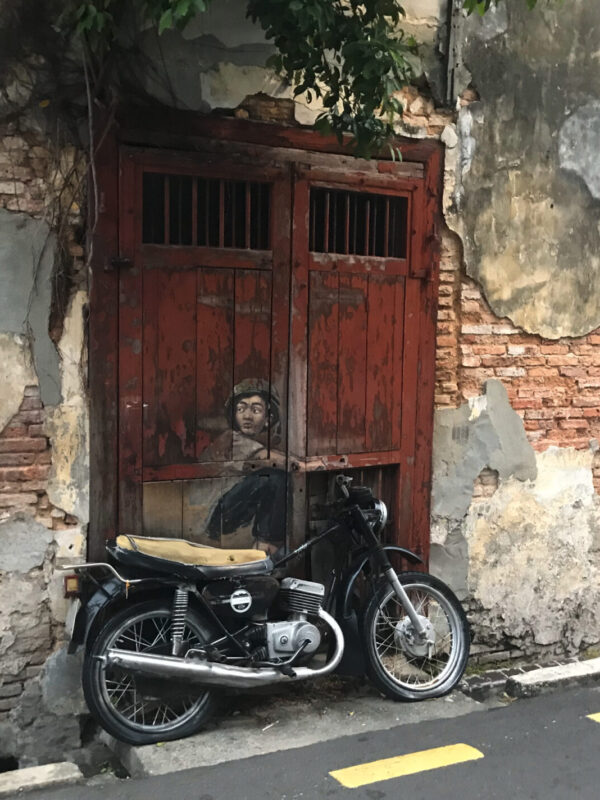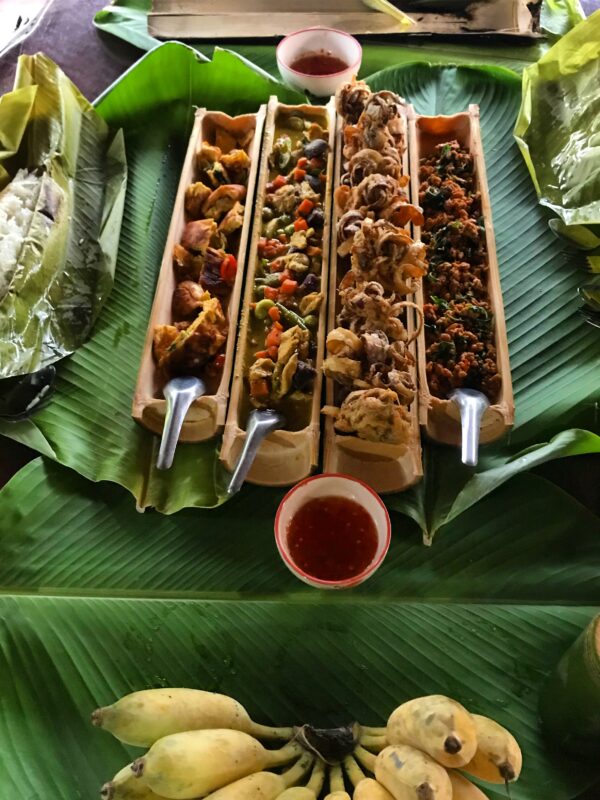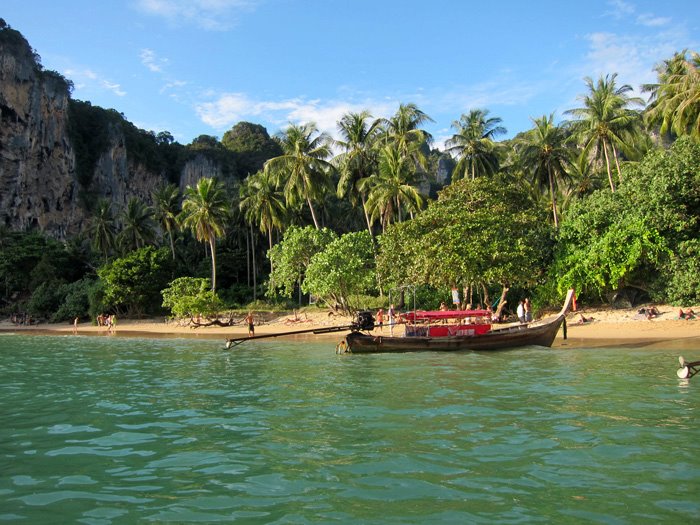Climate
Thailand has a tropical climate characterized by three distinct seasons: the hot season, the rainy season, and the cool season.
- Hot Season (March – May):
- Temperature: Highs around 30-35°C (86-95°F).
- Humidity: High humidity levels.
- Rainfall: Minimal rain, dry conditions.
- Highlights: Ideal for beach and water activities, sunbathing, and diving.
- Rainy Season (June – October):
- Temperature: Highs around 28-32°C (82-90°F).
- Humidity: High humidity levels.
- Rainfall: Frequent heavy rains and occasional flooding.
- Highlights: Lush green landscapes, fewer tourists, and more affordable accommodations.
- Cool Season (November – February):
- Temperature: Highs around 25-30°C (77-86°F).
- Humidity: Lower humidity levels.
- Rainfall: Occasional light showers.
- Highlights: Pleasant weather, ideal for exploring cities, temples, and cultural sites.
Food
Thailand has an extensive food culture with plenty of delicious flavors to explore. From the spirited street food vendors to hidden gems that reveal the essence of Thai gastronomy, your culinary journey through this enchanting land will be unforgettable.
Beyond well-known favorites like Pad Thai and Tom Yum, Thailand boasts a treasure trove of lesser-known yet incredibly delicious options. Here are some of our favorites:
- Som Tum: A zesty green papaya salad bursting with chili, lime, and palm sugar flavors. Its vibrant combination of sweet, spicy, and sour notes will awaken your taste buds.
- Khao Soi: Hailing from Northern Thailand, this rich and creamy coconut curry soup is served with egg noodles, topped with meat or tofu, and garnished with crispy noodles and fresh herbs.
- Moo Pad Krapow: Indulge in stir-fried minced pork (sub w/ tofu or mushrooms) with Thai holy basil, chili, and garlic. Served with a side of jasmine rice and a fried egg (optional), it’s a harmonious medley of flavors.
- Kanom Jin: A traditional Thai dish featuring fermented rice noodles served with various delectable curries and toppings. It makes a great light lunch!
Navigating Dietary Requirements:
Thailand’s culinary landscape is remarkably accommodating to dietary preferences and restrictions. Fear not- whether you’re vegan, vegetarian, gluten-free, or have other dietary needs – Thai cuisine has something for everyone. To ensure your dining experience is as delightful as it is delicious, here are some common phrases you can use:
| Dietary Requirement | Phrase in Thai | Pronunciation |
|---|---|---|
| Vegan | เจ (Jeh) | “Jay” |
| Vegetarian | มังสวิรัติ (Mangsawirat) | “Mung-sa-wi-rat” |
| Gluten-Free | ไม่มีกลูเตน (Mai Mee Gluten) | “Mai mee glu-ten” |
| No Dairy | ไม่ใส่นม (Mai Sai Nom) | “Mai sai nohm” |
| No Eggs | ไม่ใส่ไข่ (Mai Sai Kai) | “Mai sai kai” |
| No Nuts | ไม่ใส่ถั่ว (Mai Sai Tua) | “Mai sai tua” |
| No Fish Sauce | ไม่ใส่น้ำปลา (Mai Sai Nam Pla) | “Mai sai nam pla” |
| No Meat | ไม่ใส่เนื้อสัตว์ (Mai Sai Neua Sat) | “Mai sai neua sat” |
| No Fish | ไม่ใส่ปลา (Mai Sai Pla) | “Mai sai pla” |
Bon Appétit!
Best time to visit
Thailand is a year-round destination. However, during the middle of the dry season (February – April), there’s more sunshine, less rain, and fewer tourists at popular destinations.
Best time to book flights
As Thailand is a popular year-round destination, there are flight deals throughout the year. It would be best to look for at least 6 months to find cheap flights to Thailand.
As the high season is from December – April, the best time to get a flight deal in Thailand is from October – November. Prices go down, and demand goes up during this period.
Money matters
Regarding money matters in Thailand, the official currency is Baht. You can use credit cards at most shops and hotels. Letting your bank know you’ll be traveling is a good idea.
There are plenty of ATMs in most towns in Thailand, so you don’t have to rely on getting all your cash in Bangkok. You can also get traveler’s cheques from Thomas Cook when you arrive at Suvarnabhumi Airport. Another option is exchanging your money at a bank or a currency exchange shop. Don’t forget to change enough into Baht to get to the next destination!
When you pick up the money, ask for a receipt from the bank. You will need this receipt when you exchange your leftover currency for foreign cash before leaving the country.
Visas and permits
A standard Thai visa is valid for 30 days. Visitors can extend their stay to 60 days at an immigration office. You need to apply for this extension before your visa expires.
If you want to work in Thailand, you’ll need a non-immigrant B or O visa. You cannot get this on arrival, so visit the closest Thai embassy before you travel.
Packing for Thailand
Thailand is hot and humid, and it rains often! This means you should pack light when traveling to this fantastic country…
Here are our top tips!
- Take just one suitcase – no more than 7kg – if possible.
- Pack no less than 3 t-shirts (lightweight cotton), 2 pairs of shorts, sandals, flip flops, 2 skirts/dresses (if you plan on visiting temples), and 1 pair of trousers or capris.
- Take a small backpack with your camera, travel book(s), passport, and valuables (like your phone and wallet), so they’re easy to take on the plane or train.
- Pack as light as possible – it can get boiling in Thailand! If you want to buy more clothes when you arrive, that’s okay. Ensure you have enough space for everything – no more than 2 suitcases if possible!
How much money should you bring with you?
The cost of living in Thailand is pretty cheap compared to other big cities like London or New York City. Here are some rough estimates: Average – $30 per day if you stay in dorms or hostels, meet people, and eat street food; $50 per day in more expensive guest houses and hotels, eat out in restaurants, and rent motorbikes.
Be aware that prices may be higher if you visit popular destinations like Phuket or Chiang Mai and the northernmost areas of Thailand. To learn more about this country’s cost of living, check out Numbeo.com – it has detailed information on how much things like food and drinks cost in local currency.
How to get around when traveling in Thailand
The best way to travel between Thai cities is by plane, train, or long-distance bus. If you can’t afford these options, trains, and buses are also available for short trips! You can buy tickets online at 12go.asia . Another option is to book your train through a travel agency. Most hotels, guesthouses, and travel agencies offer this service.
What Thailand has to offer is amazing.
In conclusion, what Thailand has to offer is amazing. If you want a relaxing beach break with sun, sand, and coconuts; if you’re going to eat delicious Thai food every day; or if you like the idea of spending time in South East Asia’s cultural melting pot, then Thailand should be at the top of your bucket list!
What are you waiting for? Start looking for that excellent travel deal now!





